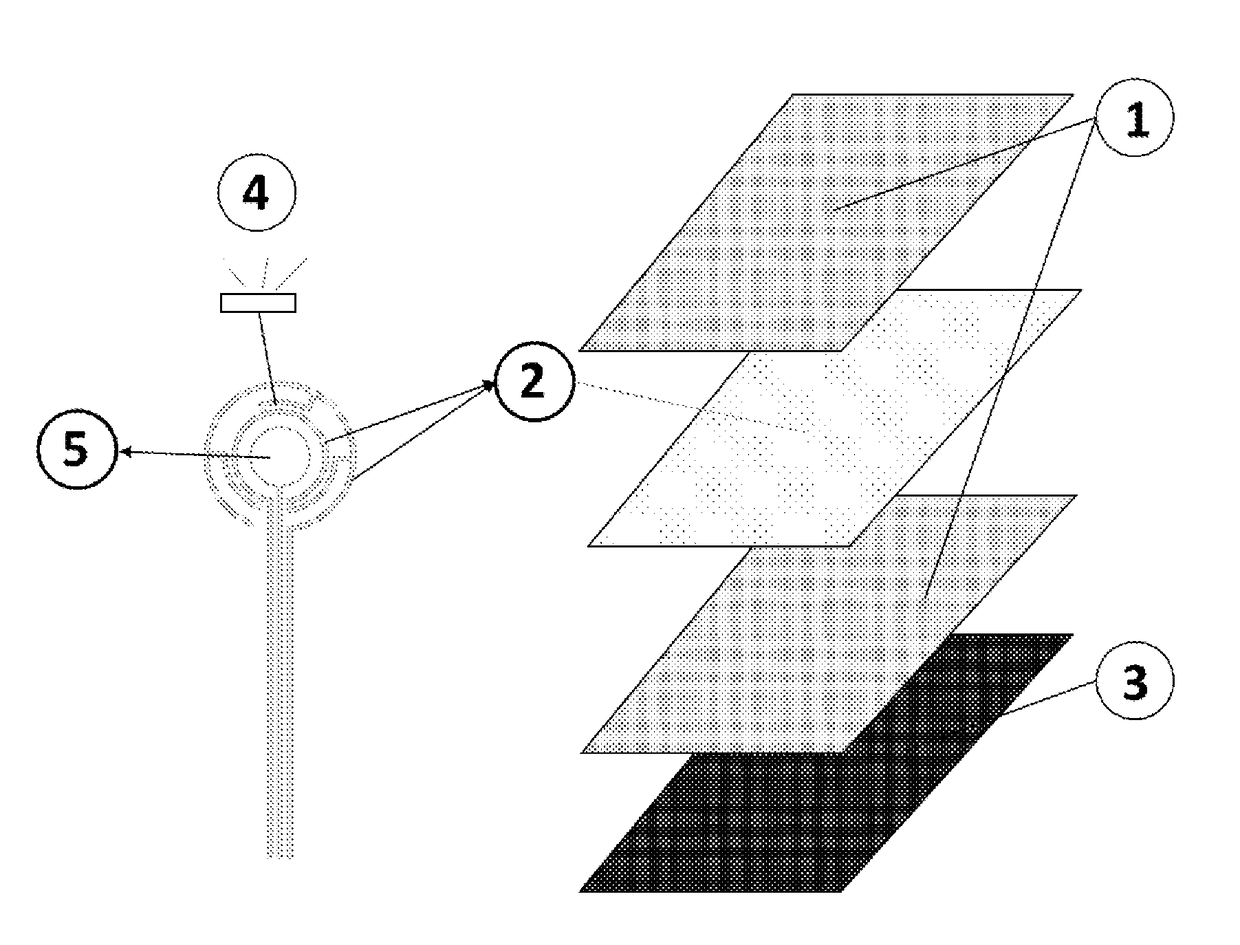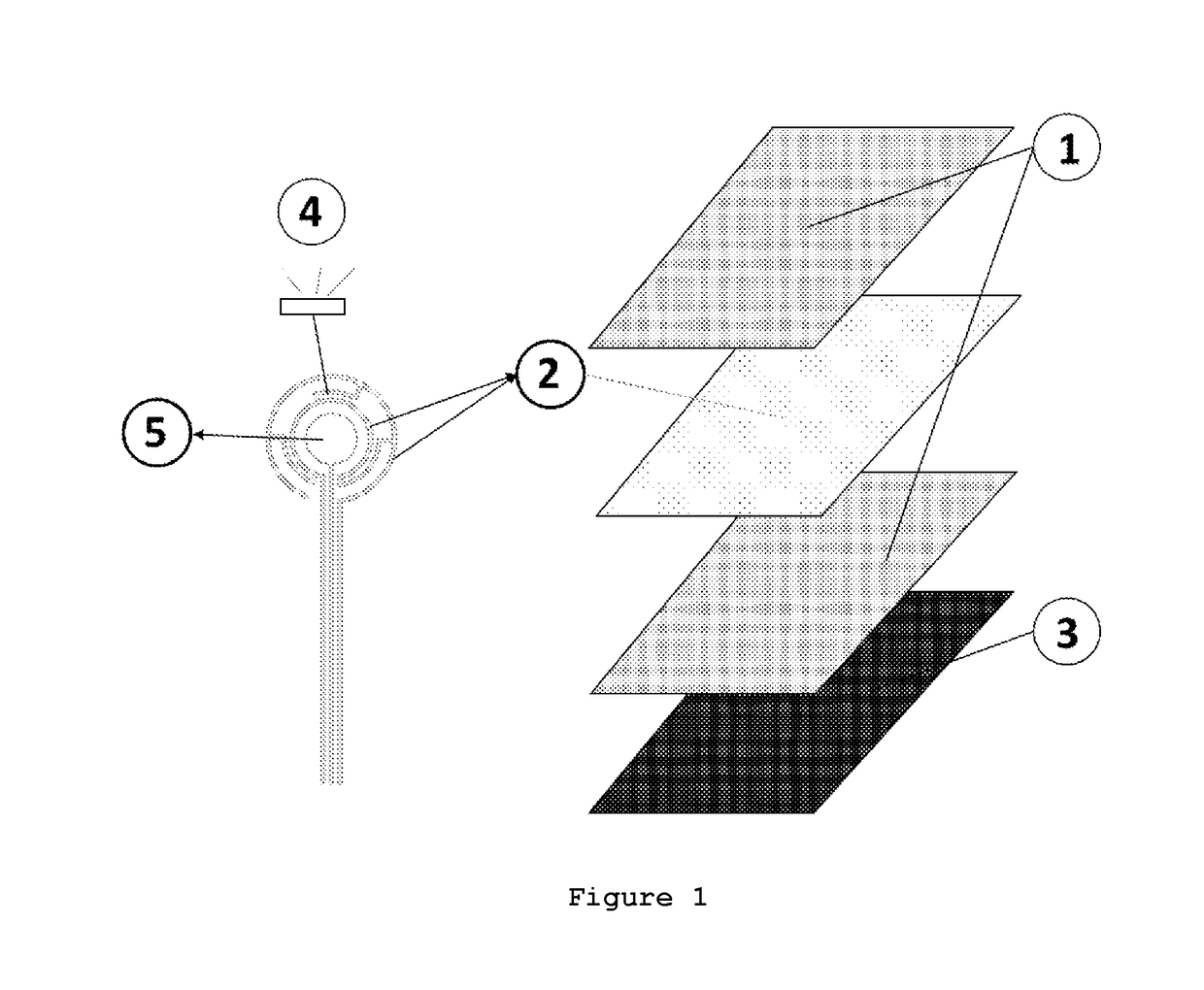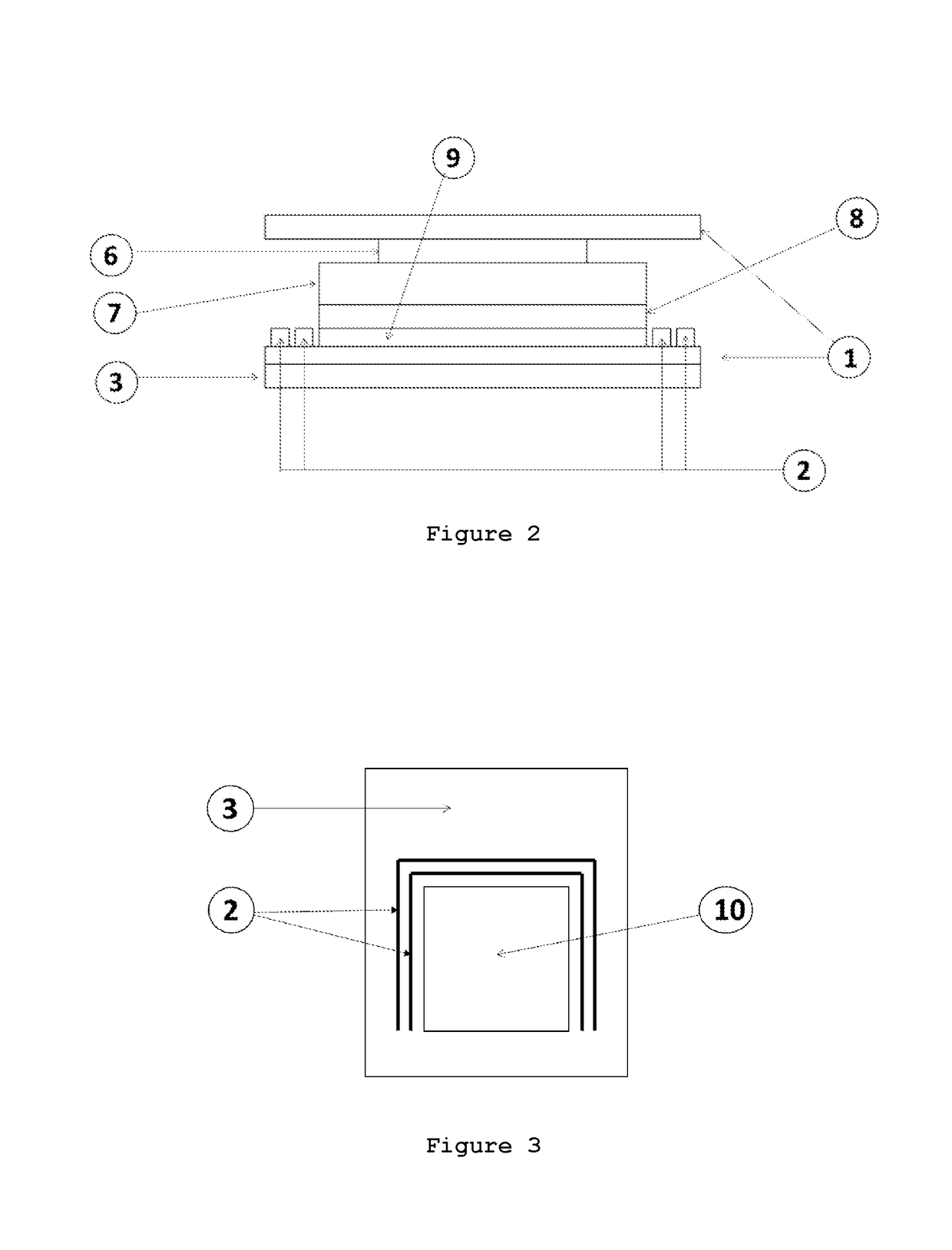Multifunctional textile sensor
a textile sensor and multi-functional technology, applied in the field of multi-functional textile sensor, can solve the problems of malfunction of capacitive sensor, achieve the effects of reducing thickness, avoiding perforation, and increasing mechanical robustness of the structur
- Summary
- Abstract
- Description
- Claims
- Application Information
AI Technical Summary
Benefits of technology
Problems solved by technology
Method used
Image
Examples
Embodiment Construction
[0165]The present application describes a multifunctional textile that comprises the integration of lighting and sensing capabilities using innovative methods and technologies. The introduction of lighting capabilities is made possible by using two possible types of devices, namely, electroluminescent devices or LEDs. Through the use of different technologies, temperature, humidity, touch and proximity sensing capabilities are also introduced into a textile substrate.
[0166]In relation to their structure and composition, the electroluminescent device and touch sensor comprising thin layers of conductive, electroluminescent and dielectric materials, applied using at least one printing and / or coating technique. As for the LEDs and temperature and humidity sensors, these are bulk electronic devices. A self-capacitive sensor was also created by the introduction of conductive wires during the knitting process of the textile substrate itself.
[0167]The touch sensors may be constructed and u...
PUM
 Login to View More
Login to View More Abstract
Description
Claims
Application Information
 Login to View More
Login to View More - R&D
- Intellectual Property
- Life Sciences
- Materials
- Tech Scout
- Unparalleled Data Quality
- Higher Quality Content
- 60% Fewer Hallucinations
Browse by: Latest US Patents, China's latest patents, Technical Efficacy Thesaurus, Application Domain, Technology Topic, Popular Technical Reports.
© 2025 PatSnap. All rights reserved.Legal|Privacy policy|Modern Slavery Act Transparency Statement|Sitemap|About US| Contact US: help@patsnap.com



